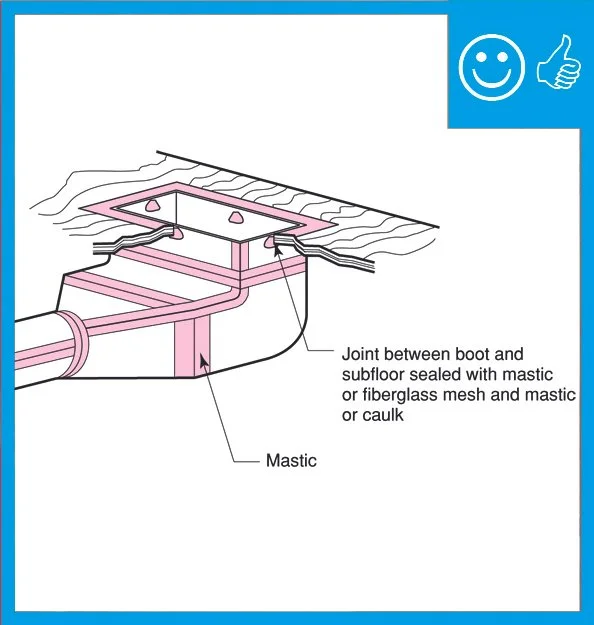Tips for Installing & Sealing Ducts (Consejos para Instalar y Sellar Ductos)
Bad duct work installation (Photo credit: Biz Sanfelippo)
What the Duct?! Don’t install duct work that looks like the picture above!
Here are Stephens & Company’s top tips for installing and sealing duct work.
Testing Requirements:
As of January 1, 2023, all ducted systems must be tested for leakage (systems inside and outside conditioned space).
Duct Installation & Sealing Tips:
Mastic paste is better than tape. (Tape may eventually come loose, but mastic will last and hold indefinitely.)
Apply mastic so it is approximately the thickness of a nickel.
"Insulated" is not the same as "air sealed" or "airtight" (especially important with insulated boots on duct systems).
Do not use framing assemblies for plenums or ducts (See IECC 2021 Chapter 4 Residential Energy – R403.3.7).
Avoid kinks and excessive bends.
Apply mastic outside of insulated boots and any seams on traditional boots (inside or outside).
Apply mastic to connections from boots to elbows and takeoffs (inside or outside).
Apply mastic to all connection points – apply to outer rim before attaching flex duct, then zip tie, and then secure insulation wrap with tape.
Apply mastic to the return where it meets sheetrock to seal where grill sometimes does not sit flush/has small gaps around it.
Apply mastic or foam to seal boots to sheetrock from above/below (attic/basement) when accessible.
Caulk all boots to sheetrock before register/grills are installed.
Apply mastic to seams on air handler, coil/blower cabinets, etc.
¡¿Qué conducto?! ¡No instale ductos que se parezcan a los de la imagen de arriba! Estos son los principales consejos de Stephens & Company para instalar y sellar ductos.
Requisitos de prueba:
A partir del 1ero de enero de 2023, todos los sistemas de ductos deben someterse a pruebas de fugas (sistemas dentro y fuera del espacio acondicionado).
Consejos para la instalación y sellado de ductos:
La pasta de mastique es mejor que la cinta adhesiva. (Es posible que la cinta se suelte con el tiempo, pero la pasta de mastique durará y se mantendrá indefinidamente).
Aplique pasta de mastique hasta que tenga aproximadamente el espesor de una moneda de cinco centavos.
"Aislado" no es lo mismo que "sellado al aire" o "hermético" (esto es especialmente importante con botas aisladas en sistemas de ductos).
No utilice conjuntos de estructuras para cámaras plenum o ductos (consulte IECC 2021 Capítulo 4 Energía residencial – R403.3.7).
Evite torceduras y dobleces excesivos.
Aplique pasta de mastique en el exterior de las botas aislantes y en las costuras de las botas tradicionales (interior o exterior).
Aplicar calafateo a las conexiones desde botas hasta codos y tomas (interiores o exteriores).
Aplique pasta de mastique a todos los puntos de conexión; aplíquela al borde exterior antes de conectar el conducto flexible, luego ate con cremallera y asegure la envoltura aislante con cinta adhesiva.
Calafatee la rejilla de retorno donde se une con la placa de yeso para sellar donde la parrilla a veces no queda al ras o tiene pequeños espacios a su alrededor.
Aplique pasta de mastique o espuma para sellar las botas al yeso desde el ático o desde el sótano cuando sea accesible.Calafatee todas las botas sobre la placa de yeso antes de instalar el registro/las parrillas.Aplique pasta de mastique a las uniones del controlador de aire, gabinetes de bobina/ventilador, etc.





Image credits: Building America Solution Center https://basc.pnnl.gov

